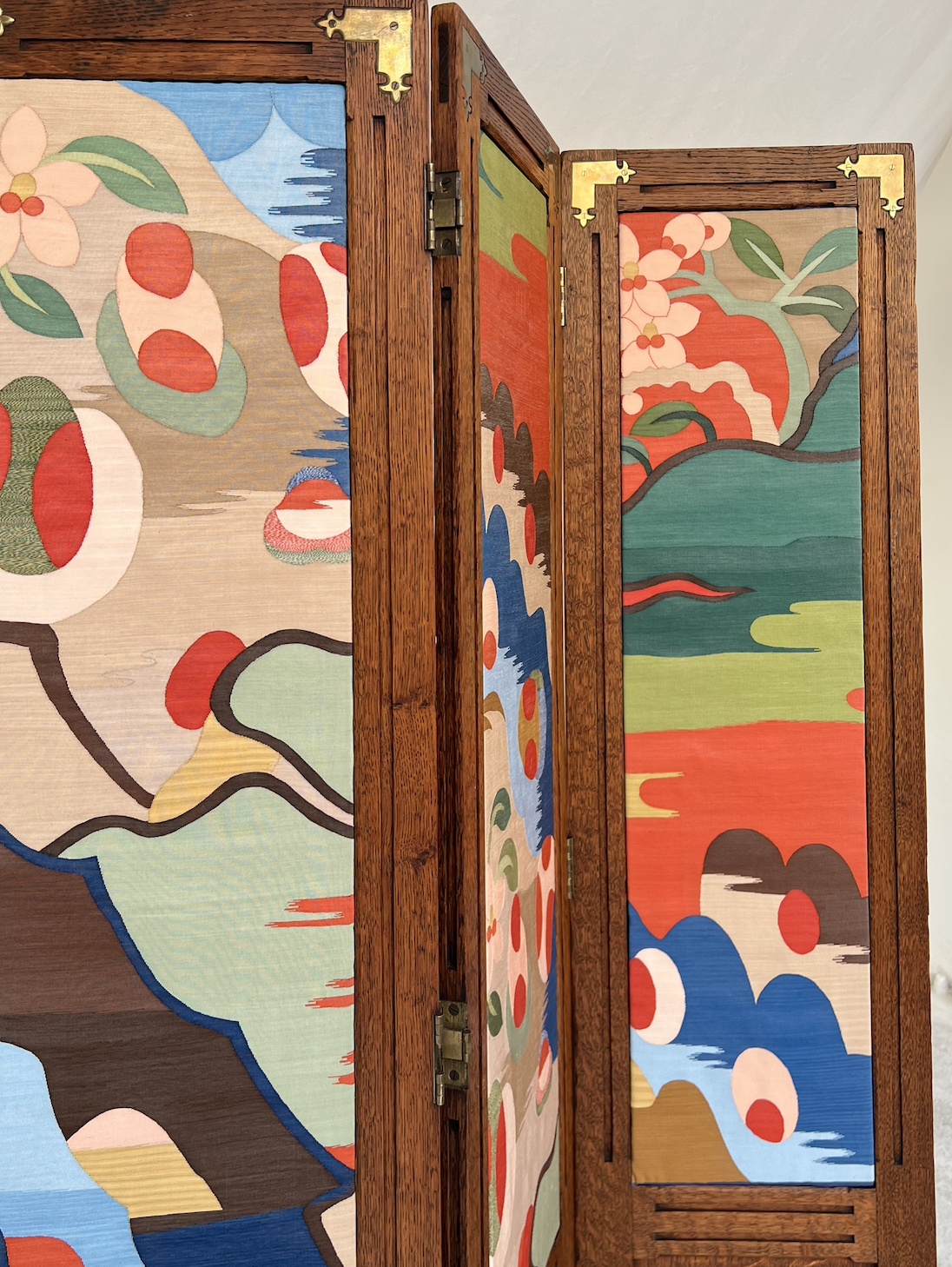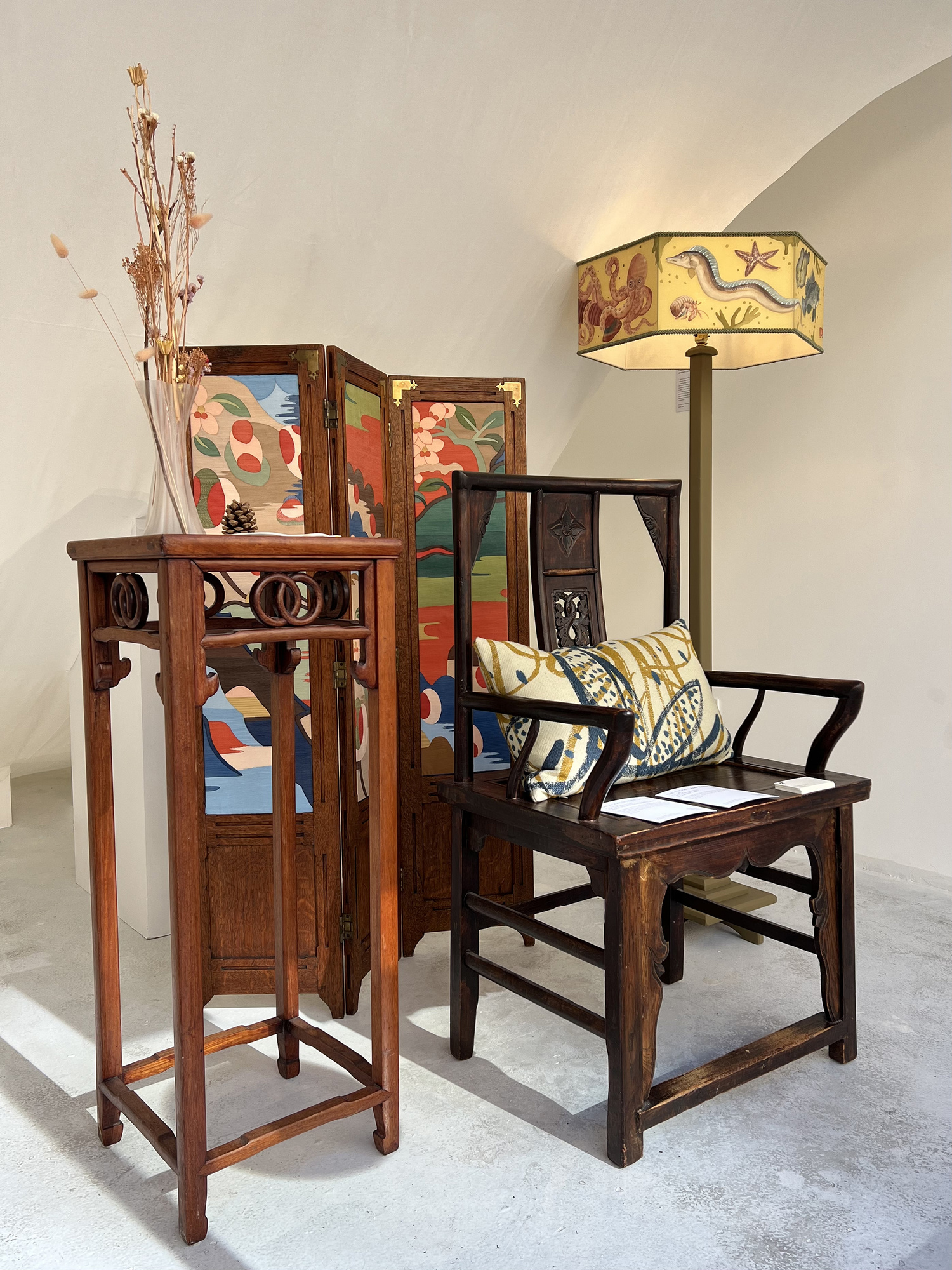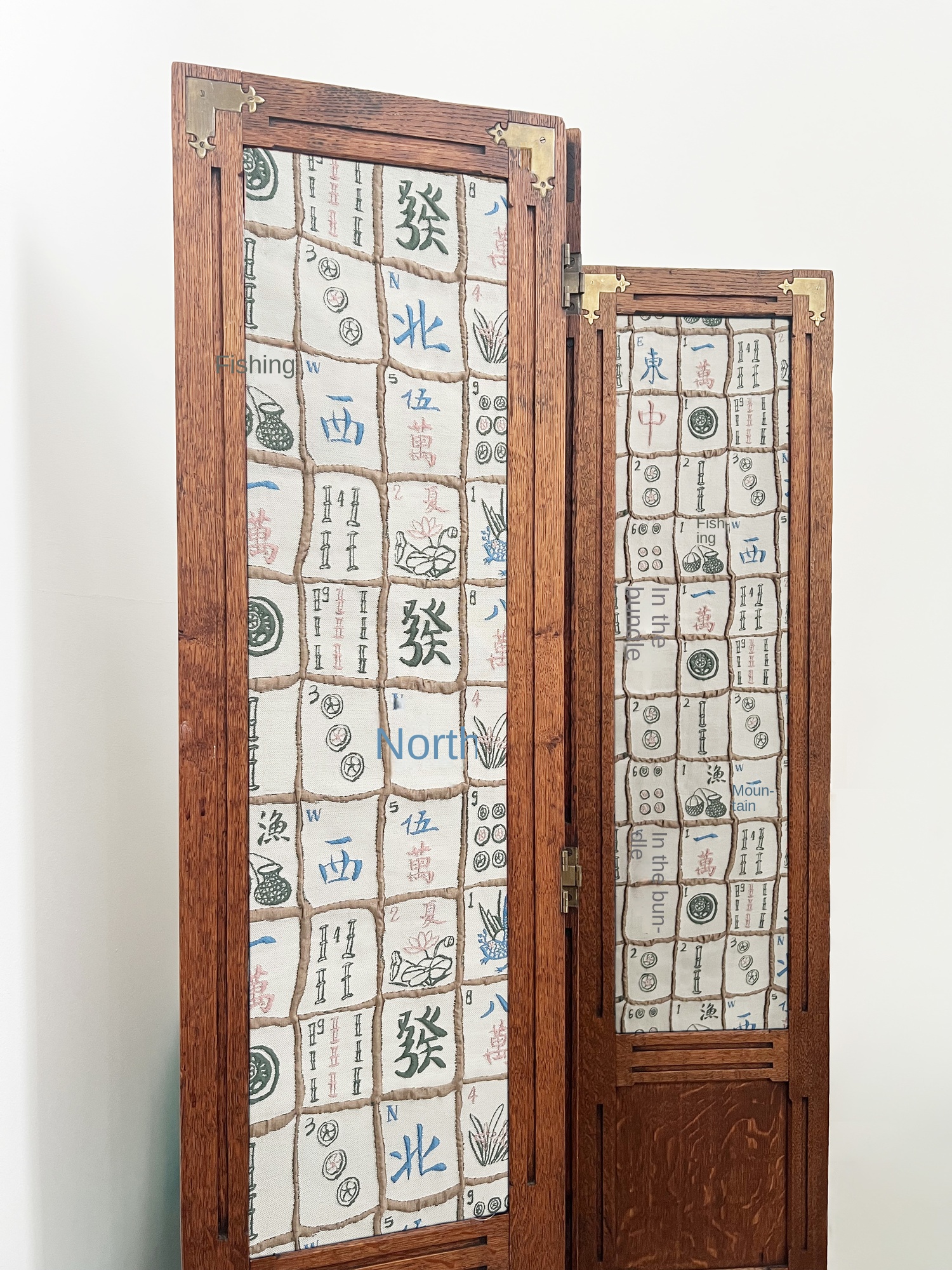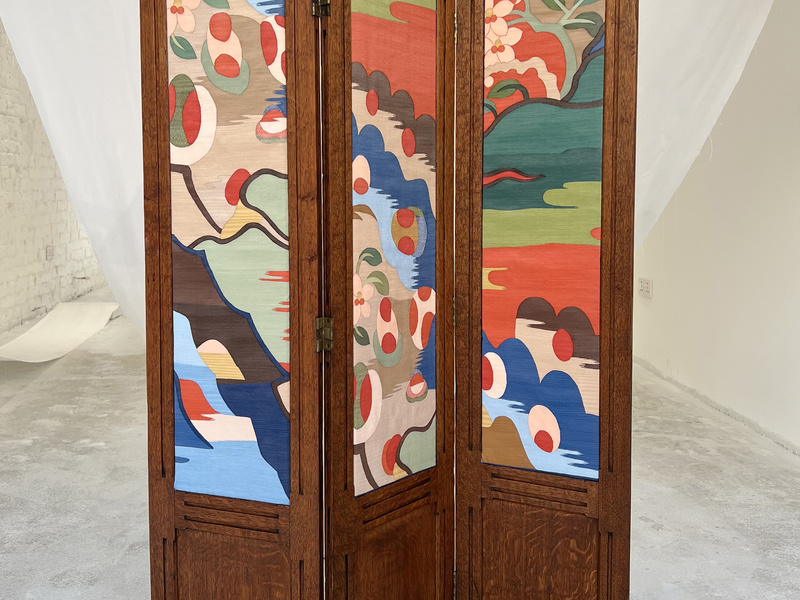
Screen 3

Screen 2

Screen 4

Screen 5
Screen Video
This screen is the designer's own antique collection, a British Edwardian oak tri-fold screen with three panels on it. On the front of each panel is the designer's new design pattern inspired by traditional Chinese landscape paintings, and made by the traditional Chinese hand-woven technology "silk" process. The pattern design on the back is inspired by the Chinese and English patterns on mahjong exported to Britain in ancient China. It uses modern jacquard technology. The pattern and jacquard technology are designed by the designer himself.
China has been trading with Britain in the field of arts and crafts for centuries. In the V & A Museum, we can see a large number of home furnishings, textiles, wallpaper, porcelain, etc. jointly designed by Chinese and British designers. The designer himself is still engaged in the work similar to that of Chinese artists and designers hundreds of years ago in Britain, and is constantly exploring how to integrate Chinese traditional handicrafts, pattern art and culture into the current home living environment. For example, the Chinoiserie French Chinese style derived from Chinese landscape flower and bird painting is an important decorative style in British homes, and it is still highly respected today. As a Chinese designer who has worked in this field for many years, I have been constantly thinking about how to integrate more contemporary designs into my former products, and the transformation of this British antique screen is also a practice of integrating Chinese and British art while continuing to renovate and innovate in British decorative culture.
Yang Yu is a designer and artist who lives and works in London. After graduating from the Royal Academy of Art, he became the first Chinese designer to work for the world's top interior home furnishing brand de Gournay Dijiali. He participated in the interior decoration project of Belvoir Castle in the United Kingdom and the design of gifts for the coronation ceremony of King Charles in the United Kingdom. After leaving Dijiali, he set up his own art studio in London to cooperate with world-renowned designers and artists to create oriental works of art for historical heritage buildings, manors, hotels, and private houses.














